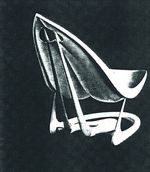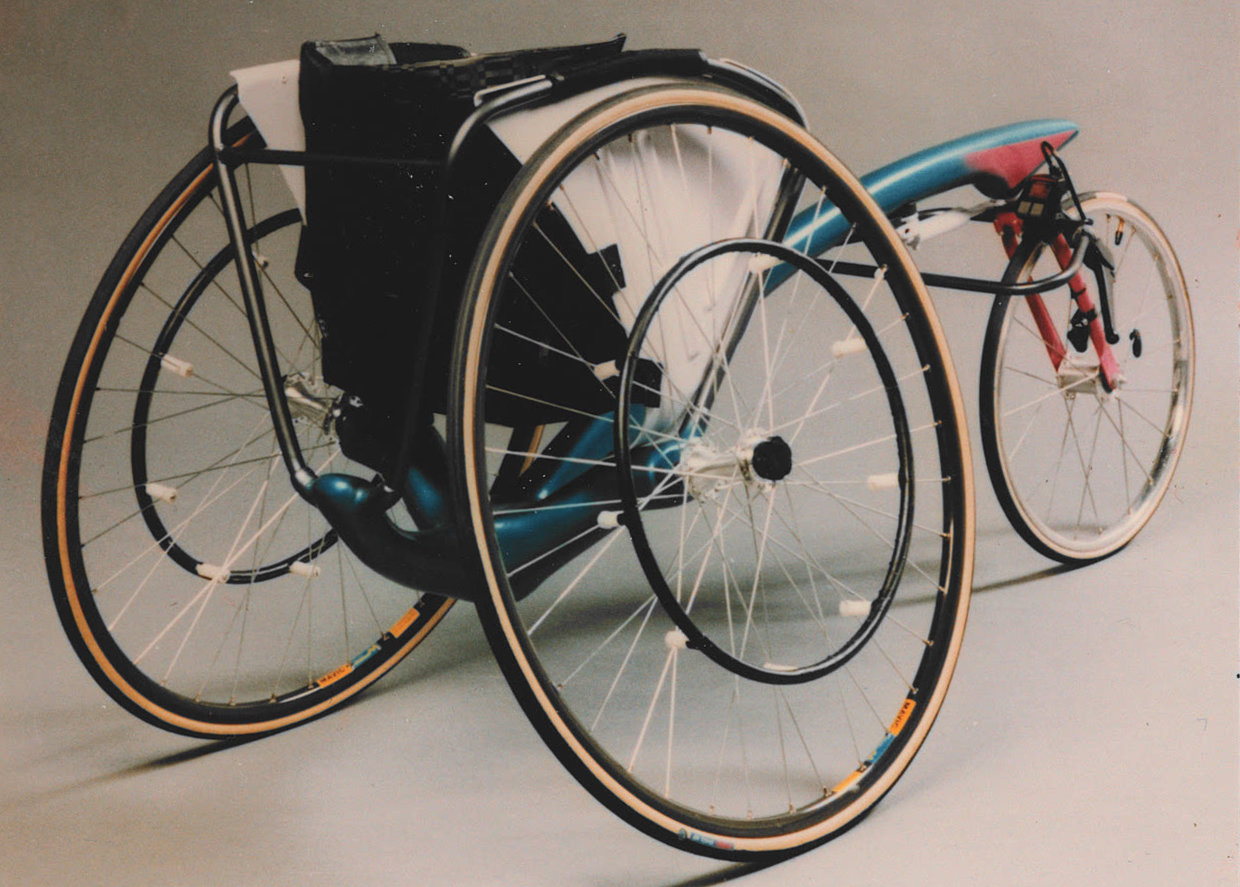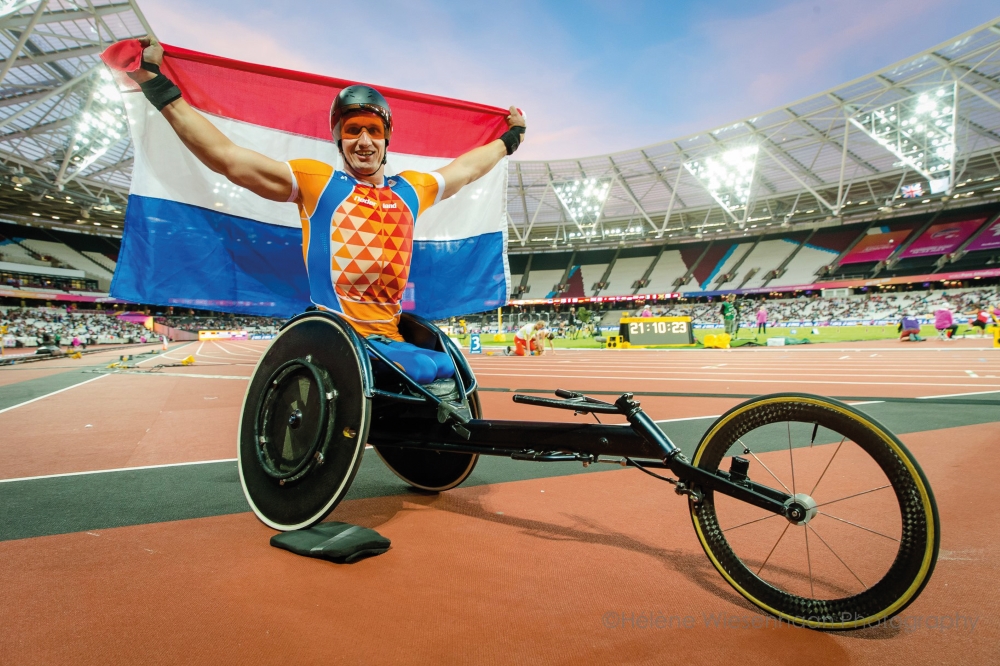Composite Racing Wheelchair (1990)
Annemiek van Boeijen
1990
Supervisory Team
Jan Willem Drukker
Johan Molenbroek
Mickey van Ooy
Veldink Rolstoeltechniek BV
A. Beukers
J.R. Veldink
With racing wheelchairs from the USA and Germany becoming more popular, Veldink Wheelchairs stood to lose market share. They hoped to stay ahead of the game by introducing the first model made of lightweight composite materials.
Van Boeijen combined a carbon fibre frame with a special bucket seat that made it easier for the rider to retain their balance, a feature still seen today. However composite production involves the use of moulds, which calls for standardization in the design, whereas wheelchair racers prefer personalisation. Also, while production is relatively easy, it still involves a lot of manual finishing. These trade-offs may be part of the reason that composites have not taken over the market completely. That does not detract from Van Boeijen’s success: her final prototype was presented at the 1990 Paralympics in Assen, and at the Young Industrial Designers exhibition in Amsterdam. Furthermore, Veldink started the production of twenty versions, based on this design.
Watch the interview:
(English subtitles available)
360° Experience:

The use of composite materials and moulds allowed designers to come up with organic forms. Van Boeijen was inspired by the organic designs of Spanish architect Santiago Calatrava Valls.
Composite materials were already being used successfully for racing bikes, but not yet for wheelchairs. The threewheel racing wheelchairs we know today, began to be adopted.

